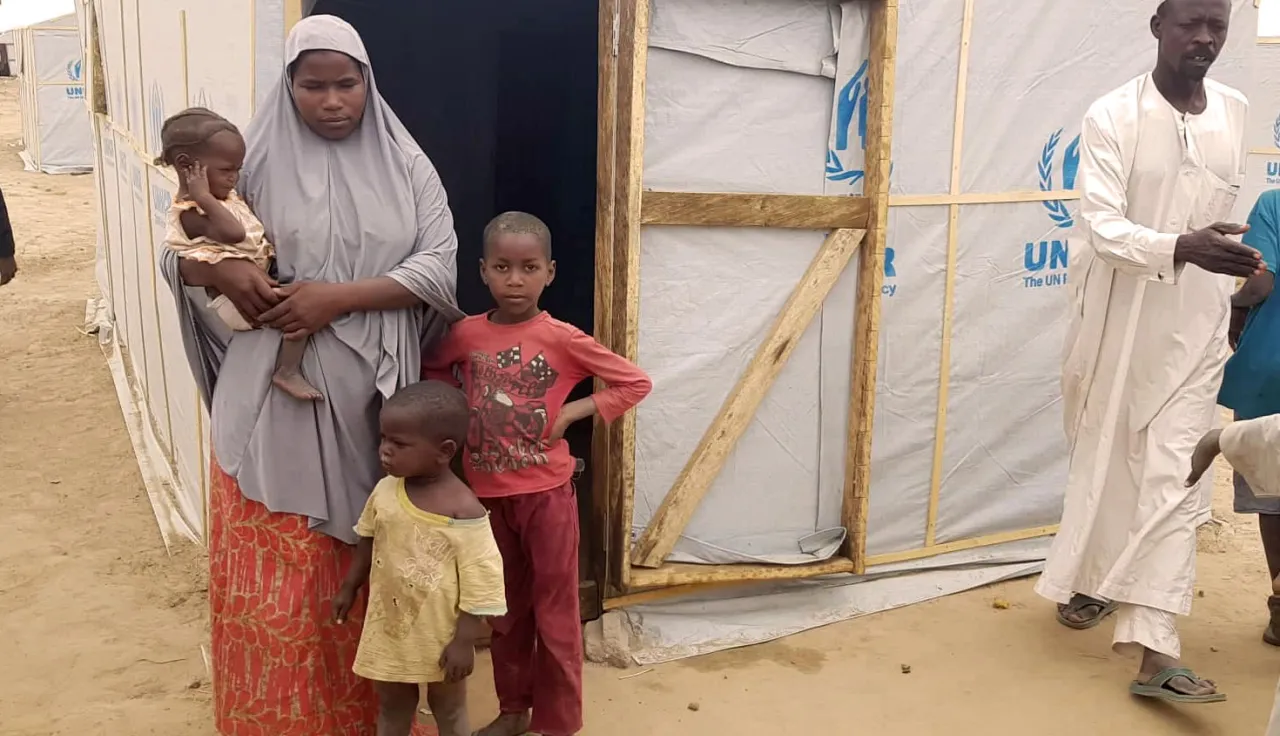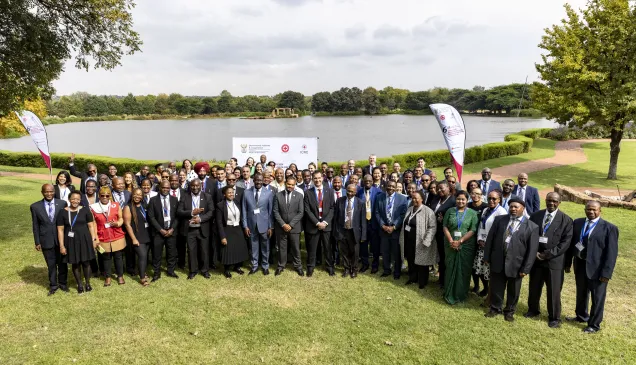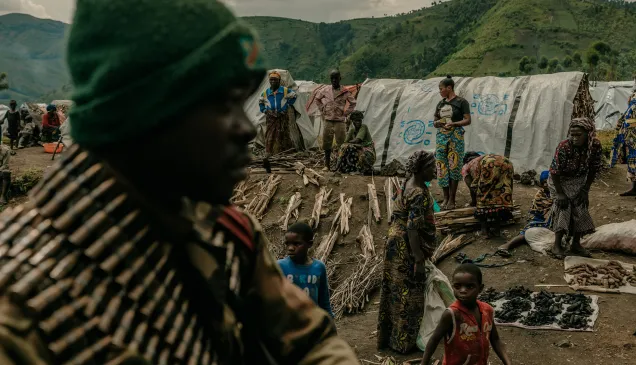Halima’s testimony: From Baga to Maiduguri’s stadium

A story of hope after displacement
Halima Yahya (25 years old) fled Baga around early January this year with her husband (35 years old) and three children (seven, four and two years old).
Back in Baga, her husband was a farmer who would collect his crops and hand them to her. Halima would then sell part of them and keep the remaining as food for the family.
The hostilities hit Baga and forced the family to flee. They left behind everything and heading to the unknown.
The trip to Maiduguri was hard, especially from Baga to Mongunu as the 58 km trip took a total of two days on foot. Halima and her husband were burdened by the weight they had to carry during the trip, as each had to carry one child and whatever essential means of subsistence they could take with them.

Halima, her husband and their three children had to endure the long walk on the way to Maiduguri, due to the lack of shelter in the Teacher's village unternally displaced persons camp before finding security in this shelter allocated to them in the new stadium camp. CC BY-NC-ND / ICRC / Charbel Sfeir
The long march was painful for the parents, and their feet swell. But the walk was even more unbearable for their eldest child. Food was scarce, and the children were crying constantly out of hunger and despair.
The parents were equally desperate, but fear and the survival instinct were stronger than any other consideration. The only solace they could give to the children was by caressing them and telling them that everything is going to be okay.
Fortunately for the family, things got a bit better when they reached Mongunu. They could manage to get transportation which took them to Maiduguri, but not without a heavy monetary price of 5,000 NGN for the 140 km ride.
Upon arrival to Maiduguri, the family settled in Teacher's Village camp for internally displaced persons (IDP) alongside thousands of other new arrivals, who also made the long journey from areas in the northern part of Borno State, which experience a spike in violence in the past few weeks.
More than 30,000 persons flocked into Maiduguri's existing 14 camps during that period. Thousands of others took refuge in garrison towns like Monguno or crossed the border into neighbouring Cameroun.

Shelters are being constructed in the stadium camp and successively handed to people moving from the Teacher's village IDP camp. CC BY-NC-ND / ICRC / Charbel Sfeir
During their stay in Teacher's village IDP camp, the family slept in the open, and were only shielded by light towels and a mosquito net that did little to avert the effects of the cold Harmattan wind and the chilly dawns.
Halima and her husband would often leave the camp to desperately look for menial daily jobs in town in order to bring back some food home. The job search would sometimes be successful, and the bit of money earned as a result meant the world for the family. Most of the times however, they found no jobs.
After a stay of around a month and a half at Teacher's village camp, the authorities moved the family to the new Stadium camp last week. This move was part of a transfer of 173 households so far. It is expected that the new camp will host up to 3,000 households in total after all the shelters and sanitation and water works there are completed.

IDPs in the stadium camp are benefitting from 16 ICRC-built water taps connected to the Alhamduri water project, also constructed by the ICRC. CC BY-NC-ND / ICRC / Charbel Sfeir
"We are happy in the stadium camp, as my children finally live in a decent shelter," said Halima. "The food we are currently receiving is also far more than what we used to receive before coming here. Thankfully, my husband and I are now less worried about how to feed our children," she added as her middle child was playfully hiding his face in her long silver-coloured veil.
Halima and her family are benefitting from a nearby water stand constructed by the ICRC to serve the IDPs transferred to the stadium camp from the teacher's village camp. The ICRC constructed 16 water stands, each containing six taps, in the stadium camp.



